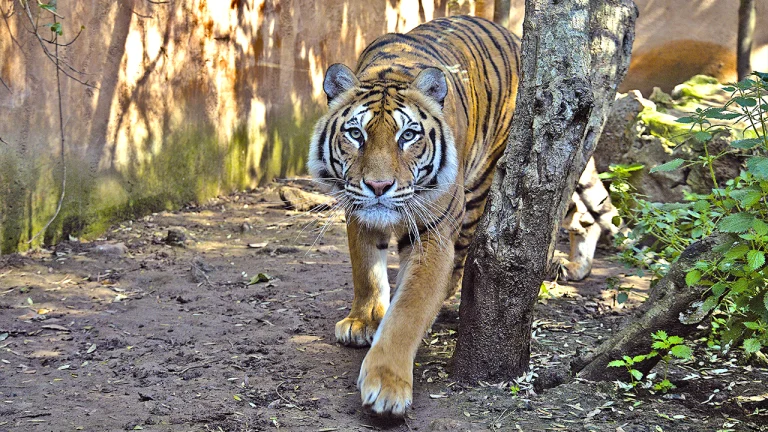(Panthera tigris tigris)
The Bengal tiger is the most numerous and well-known tiger subspecies. It inhabits India, Nepal, Bangladesh, Bhutan, Myanmar, and China. Its coat is orange with black stripes, although a rare genetic mutation produces white tiger individuals.
It is the largest of all tigers according to recent studies. Males measure between 270 and 310 cm (not including the 85–110 cm tail) and weigh about 220 kg. Females are smaller, measuring 240–265 cm and weighing around 140 kg. The world record belongs to a male hunted in India in 1967: 322 cm and 388.7 kg, exhibited at the Smithsonian.
The Bengal tiger is a solitary carnivore. Females raise their cubs in small groups, while males defend territories that may include several females. Gestation lasts 98 to 108 days, and litters consist of 1 to 6 cubs weighing about 1 kg. Their life expectancy is 10–12 years in the wild and up to 26 years in captivity.
They feed on deer, wild boar, buffalo, monkeys, and occasionally even elephant or rhinoceros calves. Attacks on humans are rare, although around 100 cases per year are recorded in Bangladesh.


